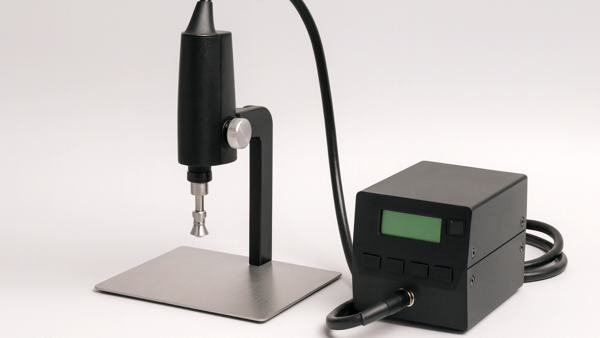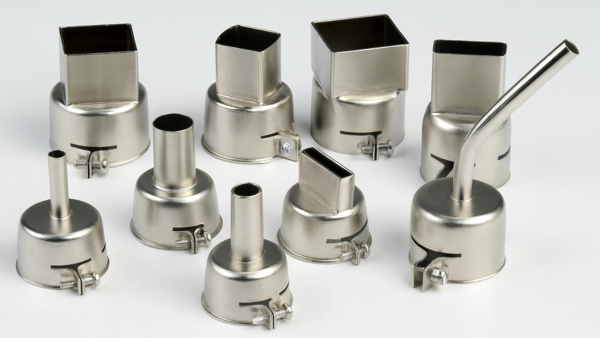|
Outline
The guide covers the general requirements for the reclamation of electronic components for reuse. These procedures differ slightly from those in prior documents covering Rework Procedures. Rework procedures focus on removing components with an emphasis on avoiding damage to the circuit board assembly. Salvaging the component for possible reuse is secondary. The procedures in this section focus on removing components with an emphasis on avoiding damage to the component. Preventing damage to the circuit board assembly is secondary.
Consider levels of conformance relative to the type of processes that will meet the reclaimed components' original body, lead, pin, and terminations (such as solder spheres and metalized areas) specifications.
|
|||
|
Procedure
Hot Air Rework Systems The nozzle size is based on the component's overall length and width. Some nozzle designs target only the leads and pad areas, while others heat the entire component body. Certain nozzles may include a vacuum assist to lift the component from the board surface after solder reflow. Users should verify the nozzle fit before processing. Typical hot gas rework tools and systems include the following. (See Figures 1, 2, and 3)
Manual Desoldering Tools |
|||
Images and Figures
Component Reclaim Basics

Figure 1. Typical hot air system.

Figure 2. Typical hot air tool.

Figure 3. Examples of hot air rework nozzles.

Figure 4. Solder Fountain system.

Figure 5. Solder Fountain system solder wave.

Figure 6. Typical desolder tool.
|
10.1 Introduction To Component Reclaim
The guide covers the basic requirements for reclaiming components for reuse.
Minimum Skill Level: N/A
Conformance Level: N/A
REQUEST FOR QUOTE GUIDES INDEX

Component Reclaim Basics

Typical hot air system.

Typical hot air tool.

Examples of hot air rework nozzles.

Solder Fountain system.

Solder Fountain system solder wave.

Typical desolder tool.

We can relaibly reclaim valuable and hard-to-source components from PCBs using advanced rework systems.
LEARN MORE
SLIDESHOW STARTING
❮
❯





